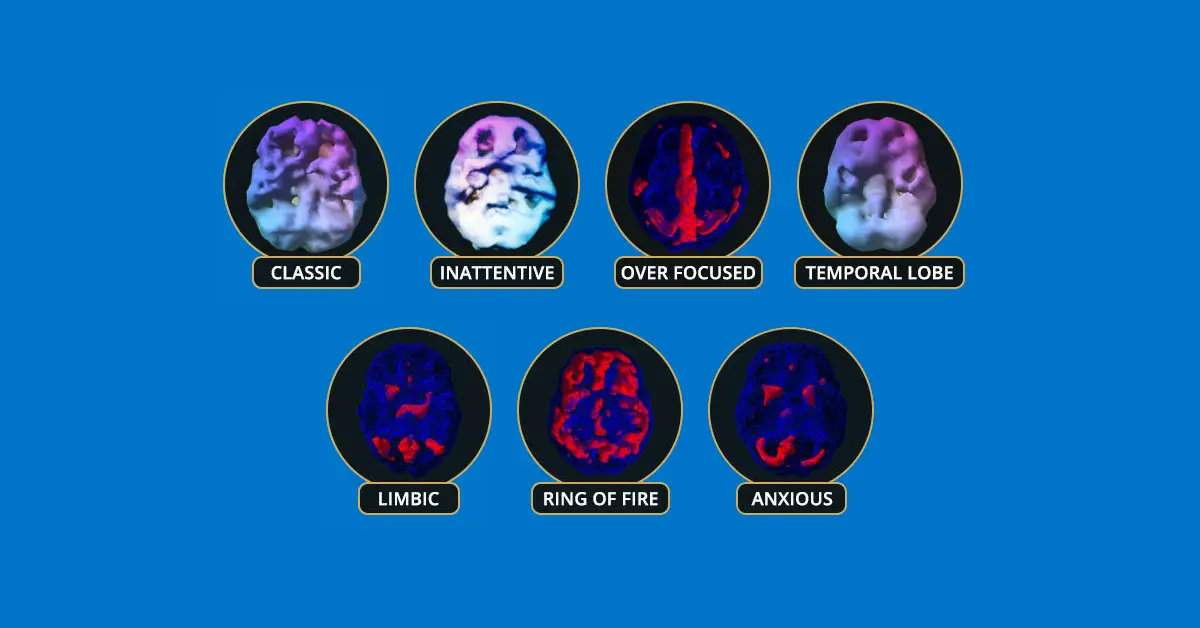7 Types of ADHD: Understanding the Many Faces of ADHD

When you hear "ADHD," a singular image might pop into your mind. But did you know that ADHD isn't just one-size-fits-all? In fact, experts have identified various types or subtypes of ADHD, each with its unique set of symptoms and challenges. Let's dive in and explore each type, but first let's look at the role of neurotransmitters in ADHD to get an idea of what's going on.
Role of Neurotransmitters in ADHD #
Neurotransmitters, such as dopamine and norepinephrine, play a crucial role in regulating attention and behavior. In individuals with ADHD, the balance and reuptake of these neurotransmitters are often disrupted, leading to the characteristic symptoms of inattention, hyperactivity, and impulsivity. Reuptake inhibitors are commonly used to treat ADHD by decreasing the rate at which neurotransmitters are reabsorbed into the presynaptic neuron. This increases the concentration of neurotransmitters in the synapse, enhancing neurotransmitter binding to both pre- and postsynaptic receptors, which helps improve focus and reduce hyperactive behaviors.
🧠 Discovering ADHD
ADHD isn't a one-size-fits-all condition. By understanding its diverse types, you can better navigate its challenges and embrace its strengths.
1. ADHD, Inattentive Type #
Remember the daydreamer in class? This type of ADHD is characterized by:
- Easily distracted
- Missing details or making careless mistakes
- Difficulty organizing tasks
- Forgetfulness in daily activities
But what does this mean? Essentially, those with inattentive ADHD might struggle with focus but don't necessarily display hyperactive or impulsive behaviors.
2. ADHD, Hyperactive-Impulsive Type #
Think of the classic "can't sit still" image. Symptoms include:
- Fidgeting or tapping hands or feet
- Inability to play or engage in activities quietly
- Interrupting or intruding on others
- Impatience
It's like having an internal motor that just won't turn off.
3. ADHD, Combined Type #
As the name suggests, this type combines symptoms of both inattention and hyperactivity-impulsivity. It's the most common type and can be quite challenging as it encompasses a broad spectrum of symptoms.
4. ADHD, Sluggish Cognitive Tempo (SCT) #
A lesser-known subtype, SCT is characterized by:
- Daydreaming frequently
- Slow processing of information
- Appearing "out of it" or foggy
- Difficulty staying awake or alert in boring situations
It's like being in a constant state of slow-motion or haze.
5. ADHD, Anxious Type #
Anxiety and ADHD can sometimes go hand in hand. This subtype includes:
- Excessive worry
- Overthinking or rumination
- Restlessness
- Tense muscles or feeling on edge
Imagine the challenges of ADHD combined with the weight of anxiety.
6. ADHD, Ring of Fire Type #
Ring of Fire ADHD is like a whirlwind of activity. It's characterized by a specific pattern of overactivity throughout the brain, making it distinct from other types.
- Sensitivity to noise, light, or touch
- Impulsiveness and quick mood shifts
- Easily distracted and hyper-reactive
- Exhibiting periods of intense, aggressive behavior
But what's behind the name? When observed through brain scans, this subtype displays a "ring" of overactivity, almost as if the brain is on fire. It's this unique pattern that gives it its fiery name.
Individuals with this type of ADHD often feel overwhelmed by the world around them, making them more prone to mood disturbances and emotional outbursts. It's like living in a constant state of sensory overload, where even the smallest stimuli can feel magnified.
7. ADHD, Limbic Type #
This type is characterized by:
- Low energy or fatigue
- Chronic moodiness or low-level depression
- Increased irritability
- Feelings of hopelessness
It's a more emotionally-driven subtype, with mood challenges at the forefront.
In Conclusion #
ADHD is a multifaceted condition, with each type offering a unique perspective into the challenges and strengths of those who live with it. Recognizing and understanding these subtypes can pave the way for more tailored treatments and interventions. If you suspect you or a loved one might have ADHD, it's crucial to consult with a healthcare professional for a proper diagnosis and guidance.